Thistles have long been appreciated as an edible in the wild food and medicinal plant community but they can be intimidating, especially for foraging beginners. Today I'll share the best tips I have for harvesting, cooking, and enjoying the ones I've cooked with.
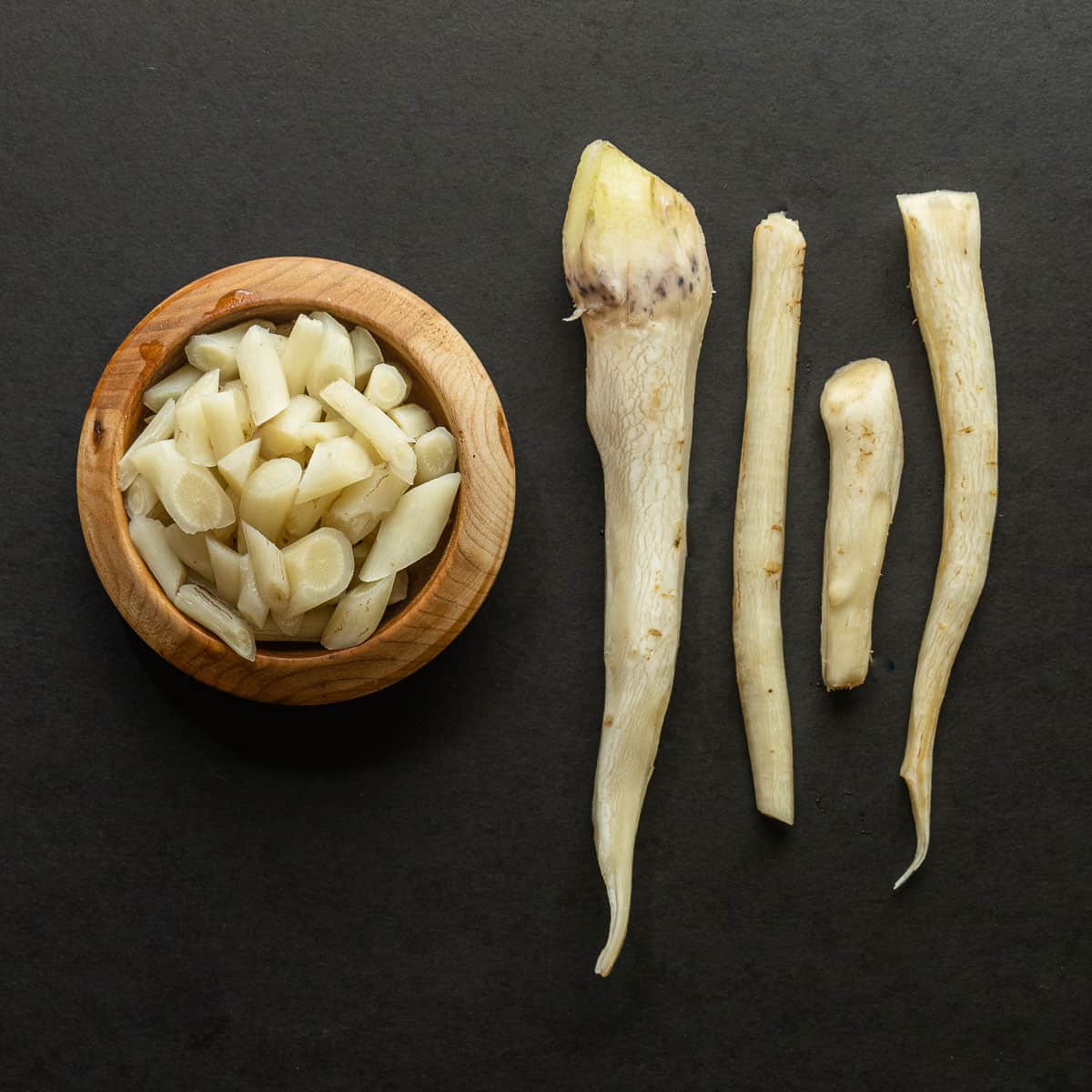
Above: A bull thistle root. You'll want to dig them in the spring or fall.
Edible Thistles
I don't know a wild thistle that isn't edible, but if they're worth harvesting will take some experimentation with your local varieties. According to the US Forest Service, there's 58 native thistle species and around 200 total in North America. So far I've eaten only a few: bull thistles (Cirsium vulgare) and a couple others I can't place.

There's definitely others that will work as I describe here, but you'll be on your own to discover them. If you need help on learning to identify thistles, Sam Thayer's new field guide is a good resource.
Below: a bull thistle basal rosette at the right stage for harvesting roots in the spring.
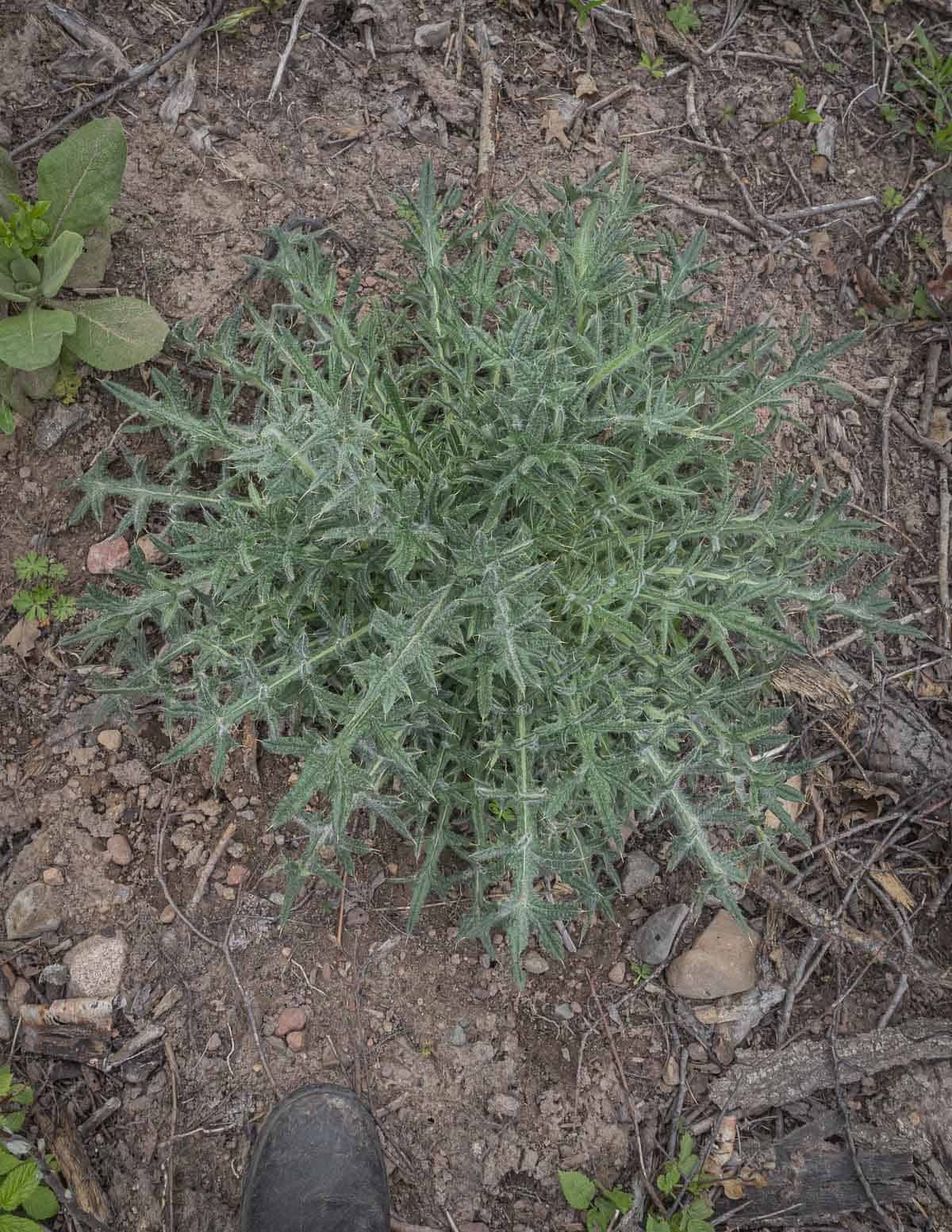
Thistle's Edible Parts
Thistle plants are related to globe artichokes, and there's a few different parts of thistles you can eat. The leaf mid rib of the larger, deeply lobed leaves can be trimmed and ingested eaten. The young flower stalk shoots can be peeled and eaten raw or cooked. Finally, the crowns and roots can be dug and cooked as a vegetable.
Below: One of my winning dishes from Chef's vs Wild: lacquered elk ribs with chanterelles, rose hips and thistle roots.
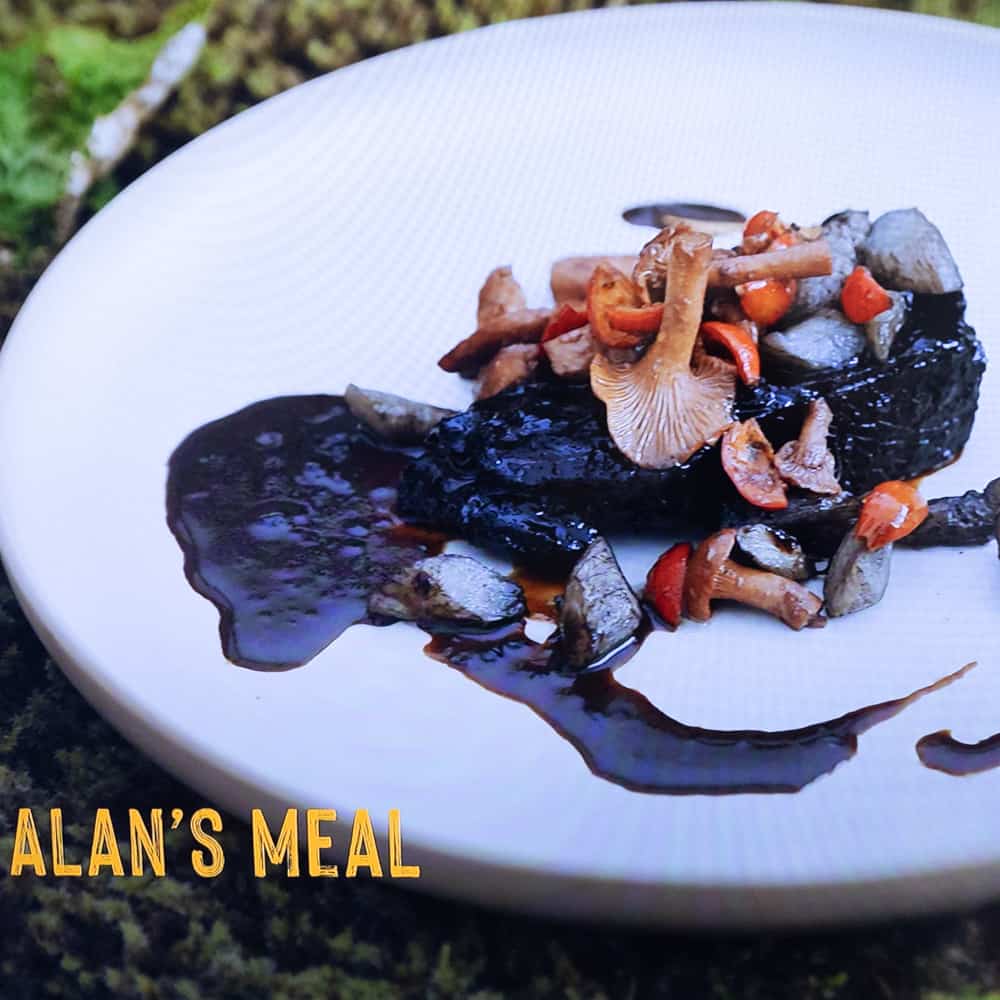
Some describe eating thistle flower blossoms (the purple flower buds) and thistle seeds. I think they're hardly worth mentioning for the work involved. There are anecdotal accounts of the dried florets being used to curdle cheese like rennet in Italy. There's also Portuguese Azeitão, a sheeps milk cheese made using thistle.
Below: Harvesting the best thistle root I've eaten. If I had to guess I'd wager they were Cirsium arvense or Cirsium scariosum, Sam Thayer's field guide also mentions Cirsium discolor as having large, tender roots.

I'll describe how to cook all of the parts I've tried, but you should know that the only part of the plant I find tasty enough to harvest is the roots.
Below: harvesting my first thistle roots, which were sweet and nearly as tender as common carrots.

A word on safety. Some recommend eye protection when harvesting thistles. If you're careful I don't think goggles are necessary, but you do need to be mindful of the thorns.
Each thorn is about 1 cm long and is rigid and sharp. I was careful processing these and I still have a thorn in my finger a week later. Wear heavy gloves when handling thistles, and use a long, sharp knife for or scissors for trimming.
Below: the angry, vindictive spines of bull thistle.
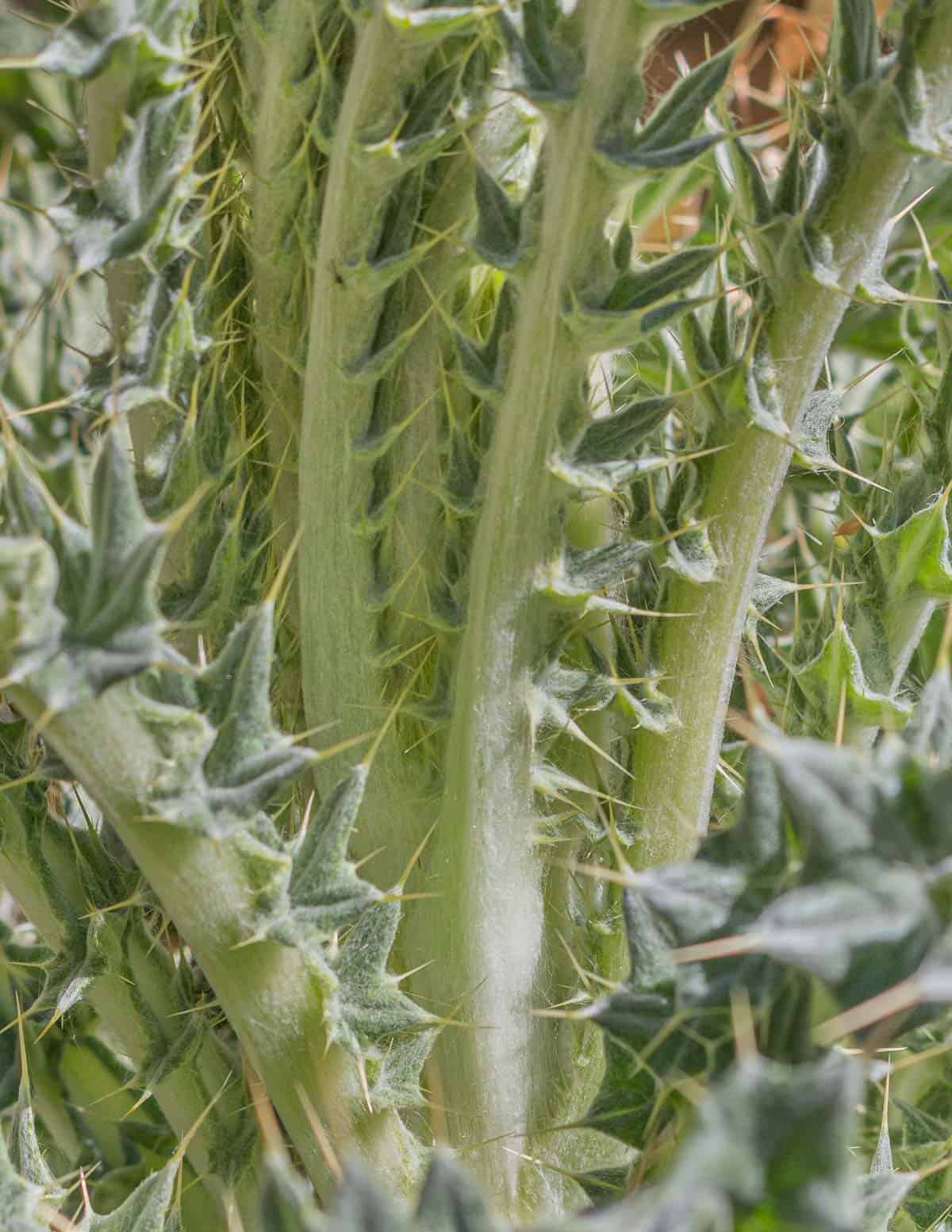
Thistle Leaves
Thistle leaves are the last part of the plant I would eat as they're a pain to clean, unless you're in a survival situation. The part of the leaf that's eaten is the midrib. To get midribs thick enough to eat you'll need a thistle with large leaves. Like the rest of the plant, the leaves are covered in thin, sharp spines that need to be removed.
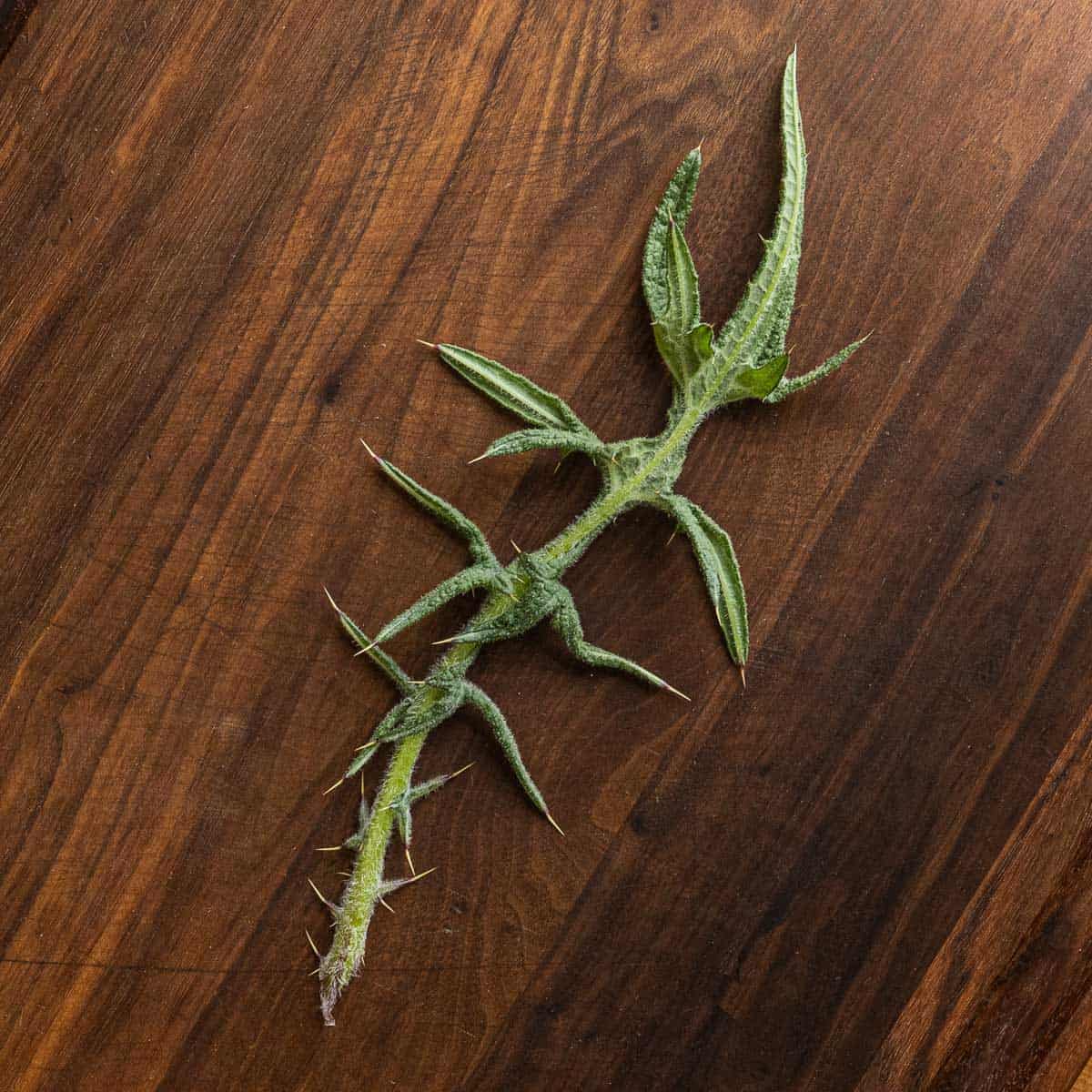
To prepare the leaves/midrib of thistle plants for cooking, remove the outer leaves and all spines with a sharp knife. Blanch the midribs in salted water until they're tender and taste good to you.
They can be eaten raw but are chewy and furry. Apparently Native Americans used the juicy mid ribs as a water source. That won't be applicable to most foragers unless in a survival situation.
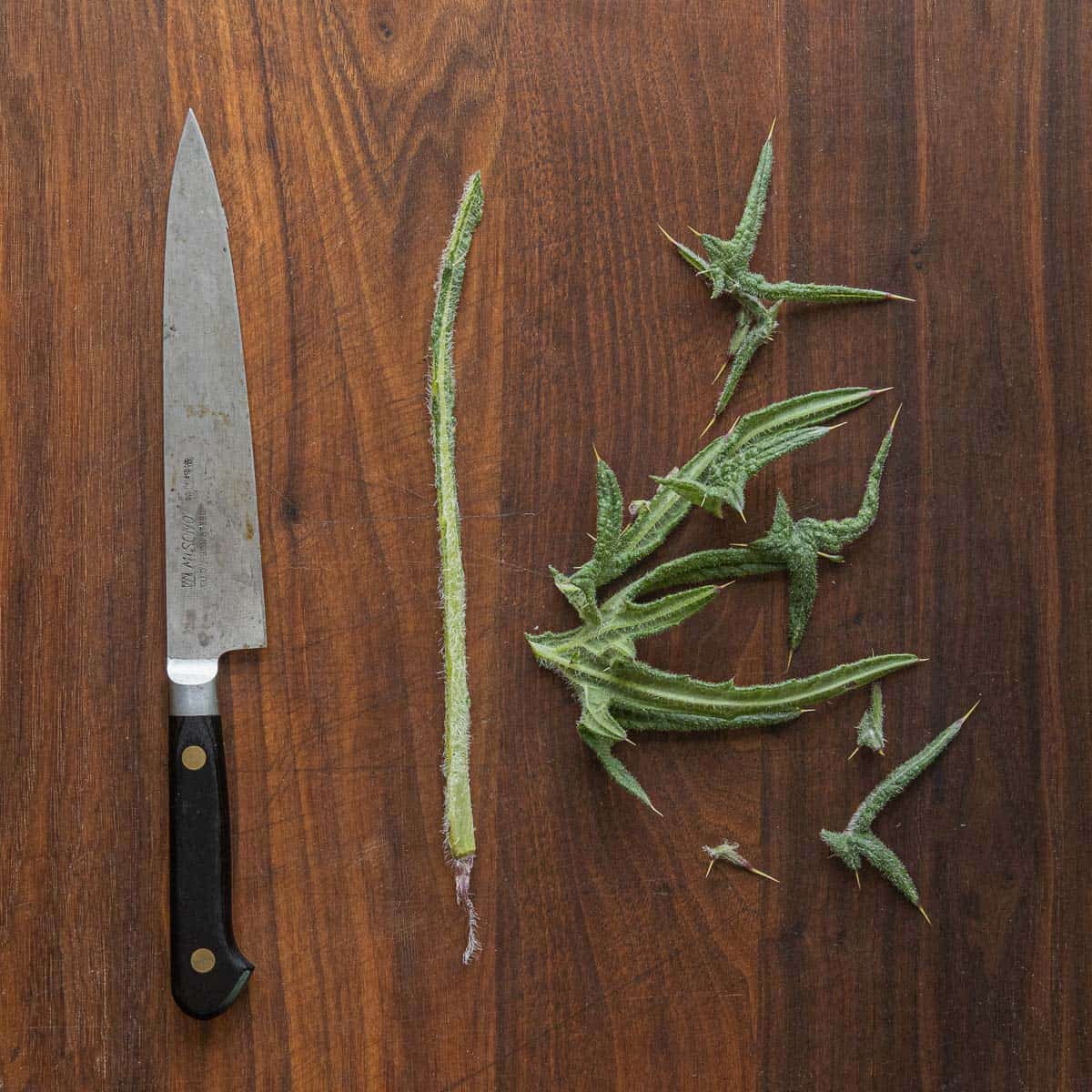
Thistle Stalk
The second best part of the plant are the immature flower stalks or thistle shoots. They should be harvested in late spring or summer. If you've ever had burdock flower stalks this process will be familiar.
Below: a young thistle shoot before trimming.
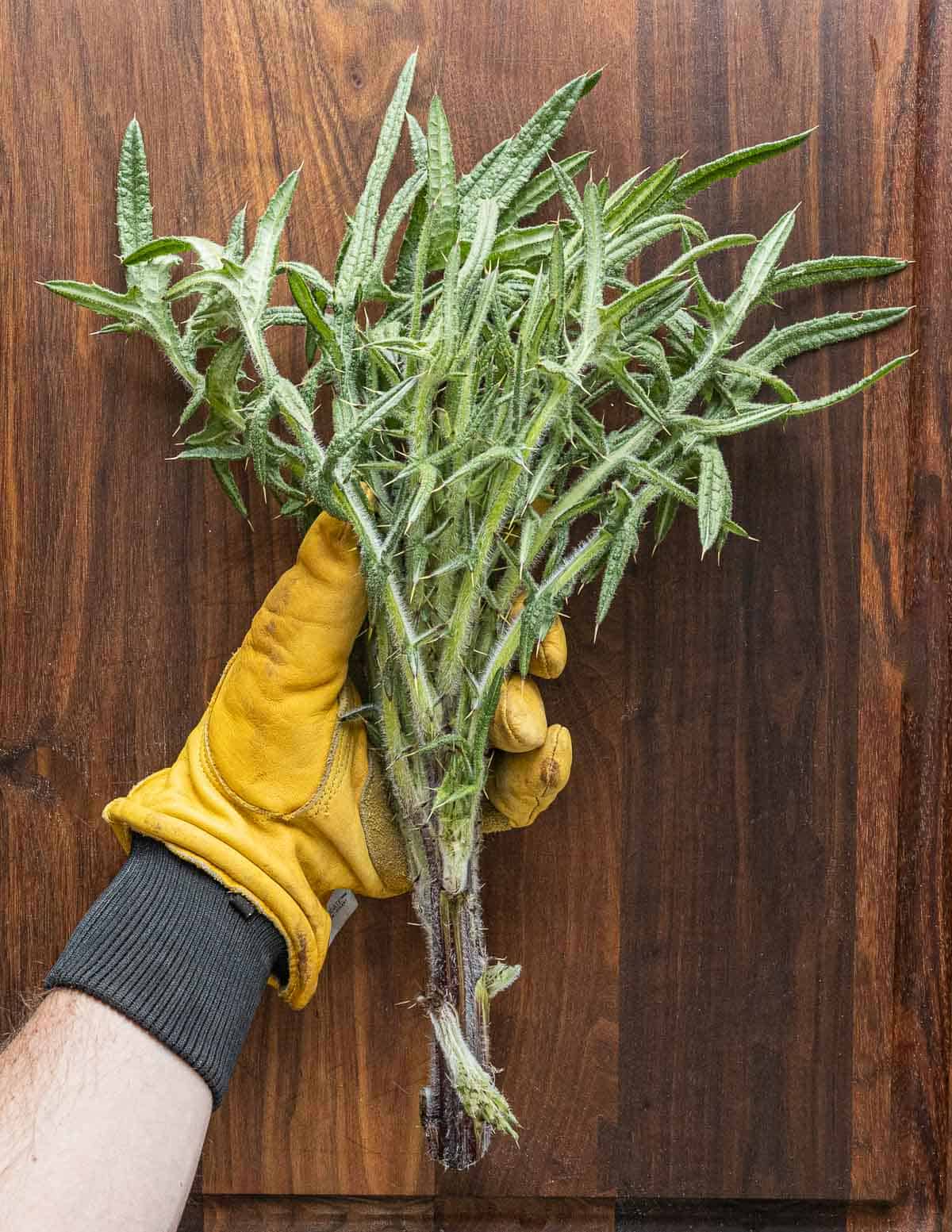
You want to harvest the thistle stem/shoot young before it's started to become a tall flowering stem or showing flower buds. Harvested too late they will be tough and woody.
To prepare thistle stalks for eating they should be first peeled using a paring knife. I demonstrate this in the video.
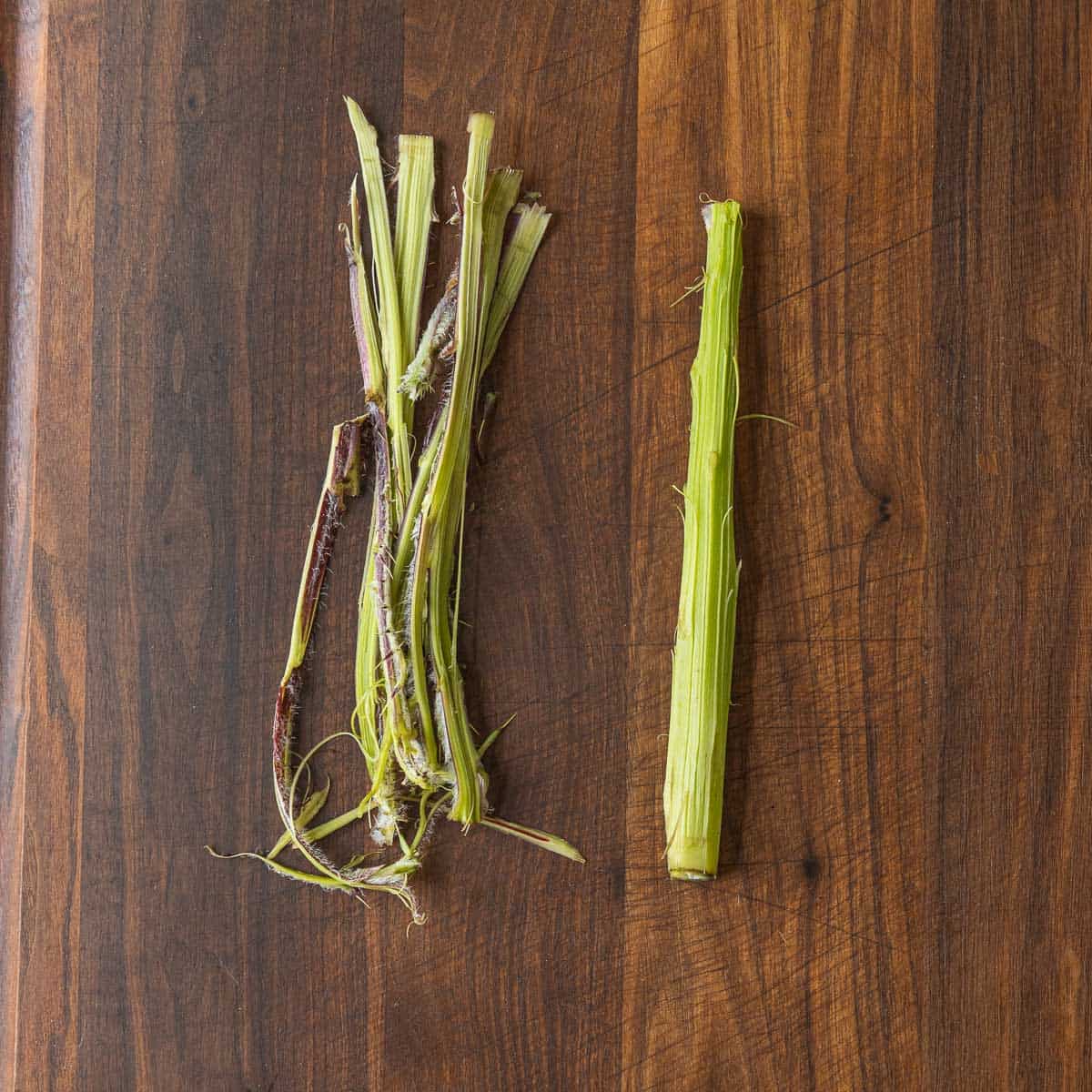

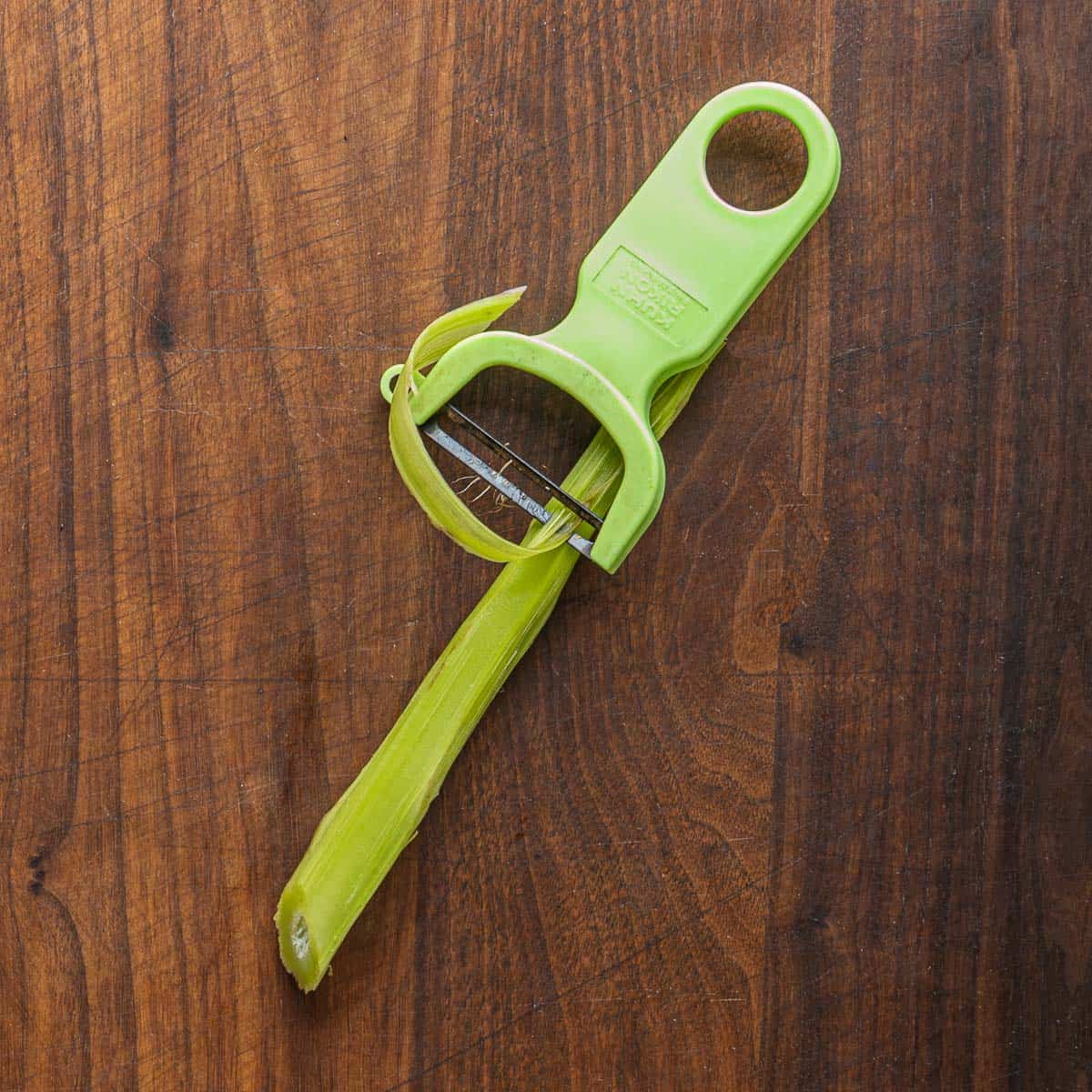
After the outer skin is removed, the stalk will be covered with an inner layer of tough green fibers that become more rigid as the shoots grow taller. For the best texture, peel them with a vegetable peeler to reveal a crisp, hollow green tube.
Peeled thistle stalks can be eaten raw or cooked. I've eaten them sliced and tossed in salads, or mixed with other spring vegetables like radishes and asparagus.
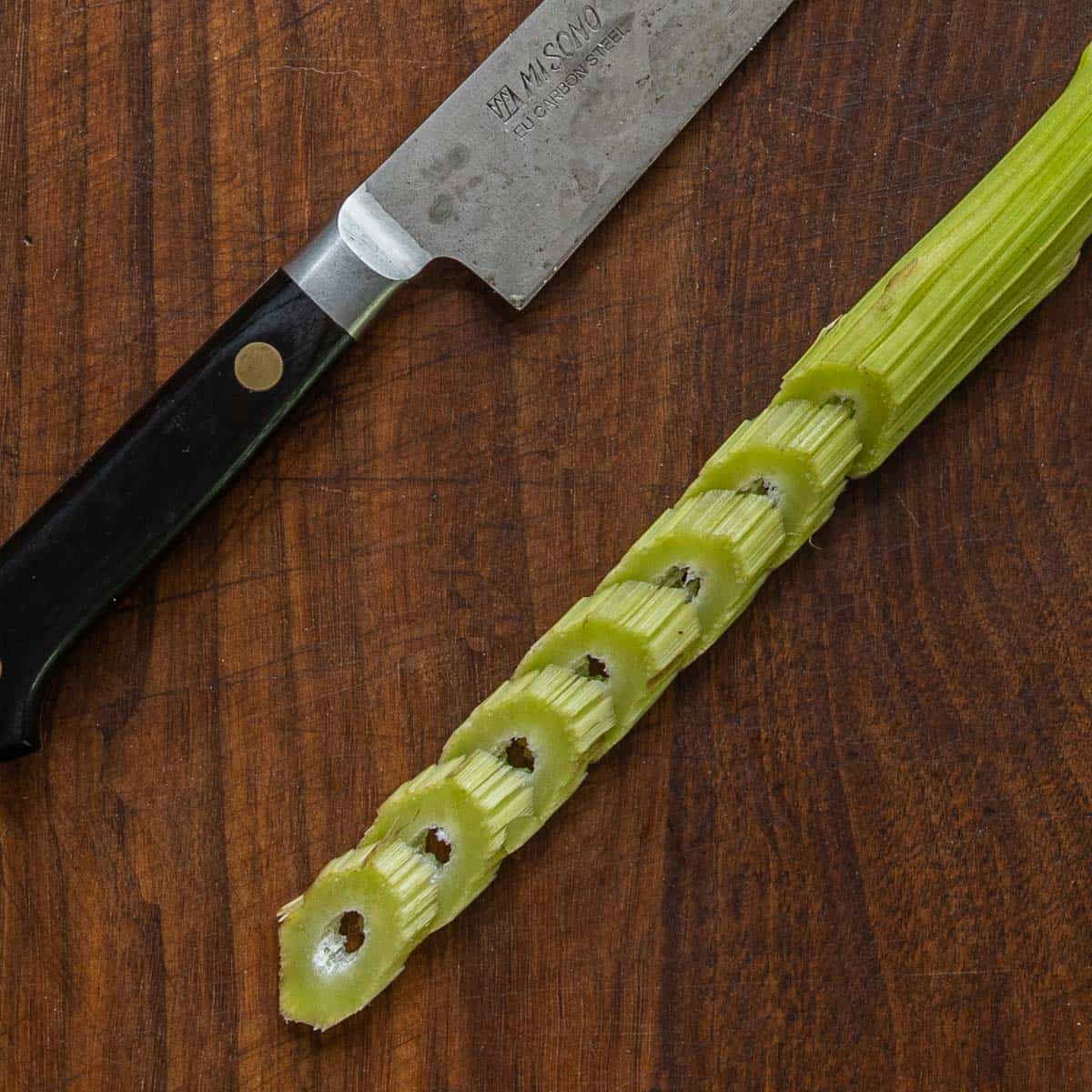
Thistle Root
Thistle roots are edible and the best part to eat. If you like burdock root (gobo) you'll love thistle roots. If you get a variety that has slender, long roots, they can be nearly as tender as carrots. They make a fine root vegetable with a flavor reminiscent of artichokes.
Below: peeling a bull thistle root. I recommend Kuhn Rikon peelers.
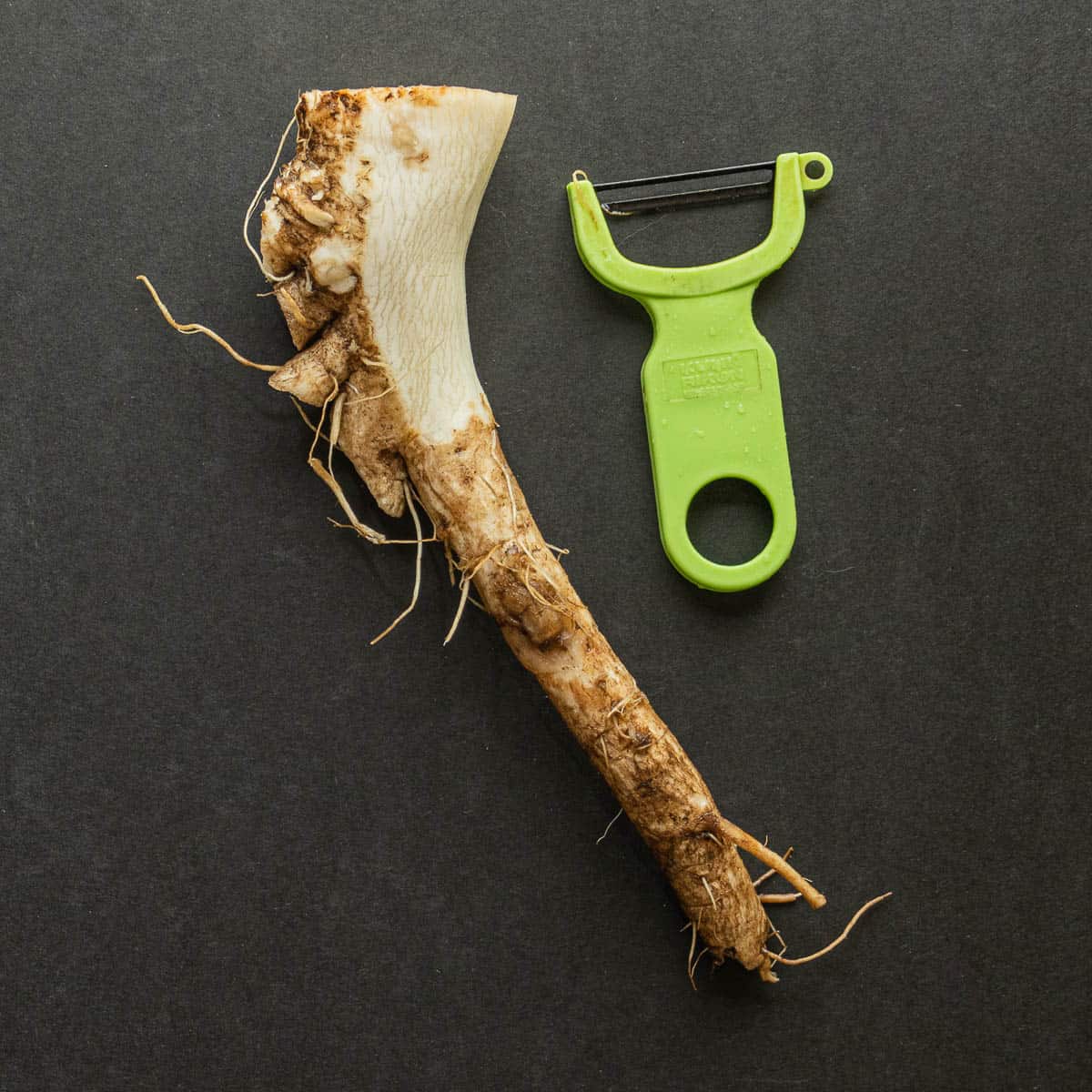
Here's a few tips for harvesting the roots
- The ground will ideally be soft and easy to dig in. If the ground is rocky the roots can split, fork, or be stunted.
- Digging roots after a rain makes them easier to unearth.
- Not every species will have great roots to eat. The best roots are long and slender, reminiscent of carrots.
- After trimming, the crowns of bull thistle can make a good amount of food. This part is often tougher, so it's best used for kinpira near the end of the post.
To harvest the roots, I use my knife to chop off the leaves, clearing away debris around the thistle crown. I jump on my shovel in a circular pattern around the root, using all my might the last time, pulling back on the shovel to reveal as much root as I can. As with burdock roots, I don't try to remove the whole taproot.
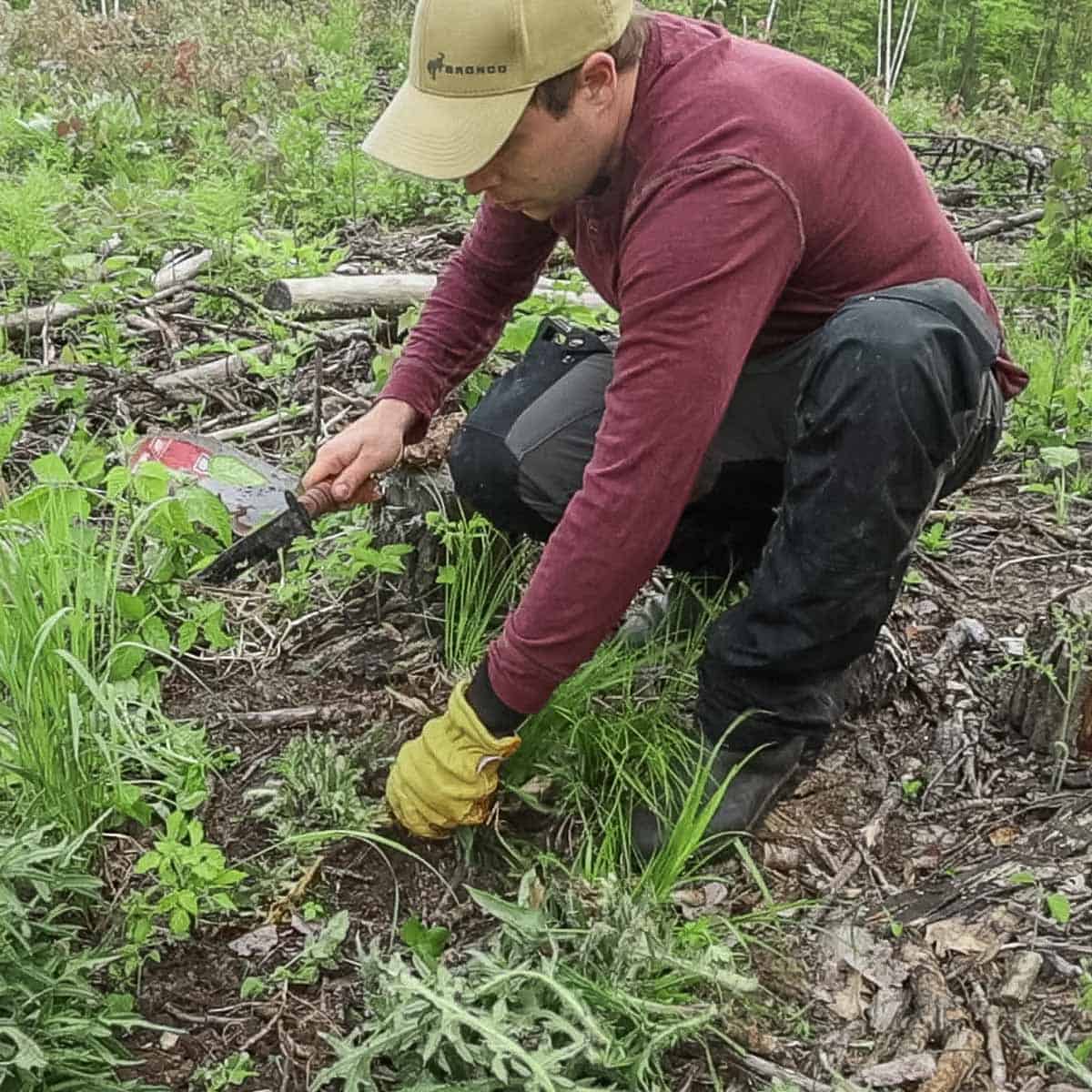
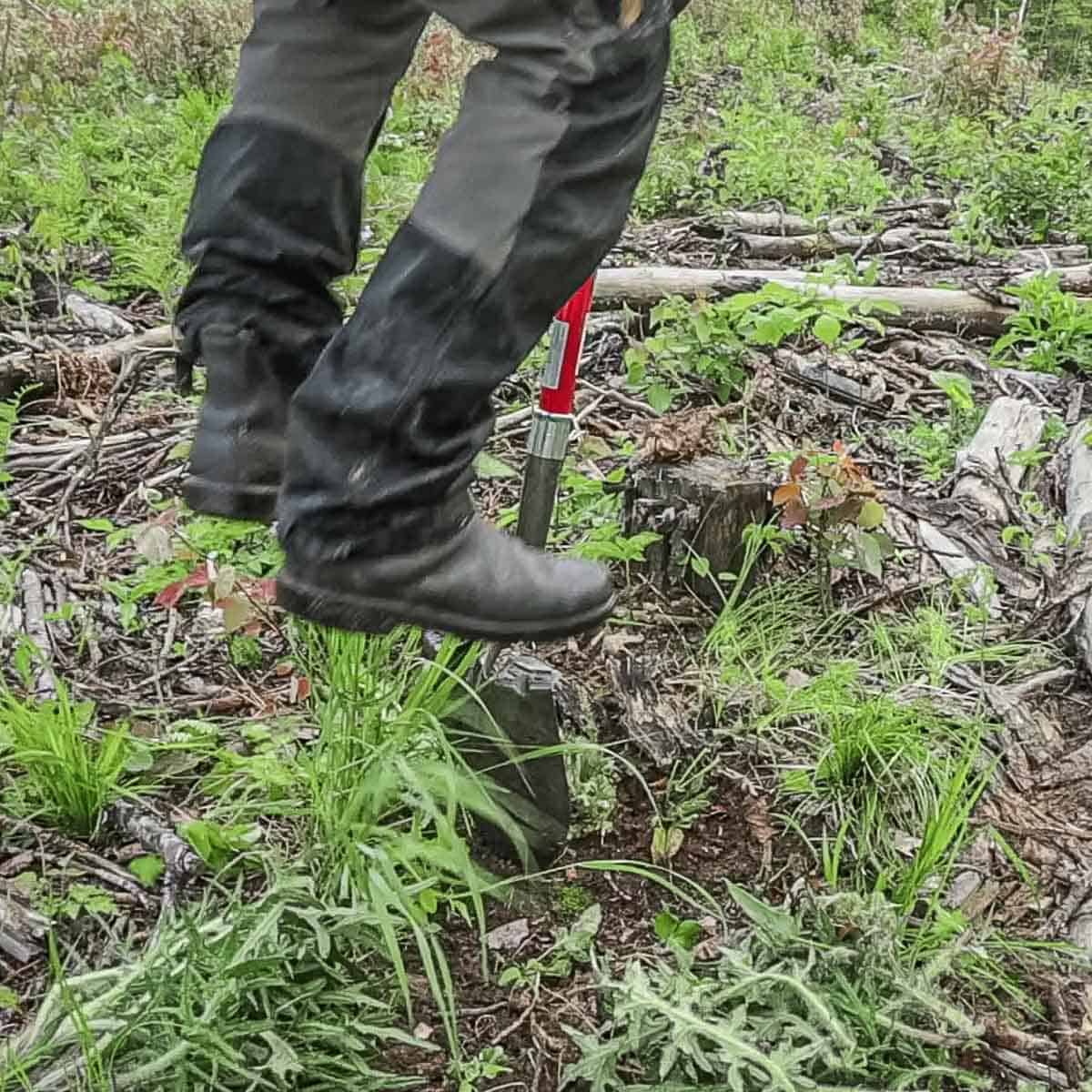
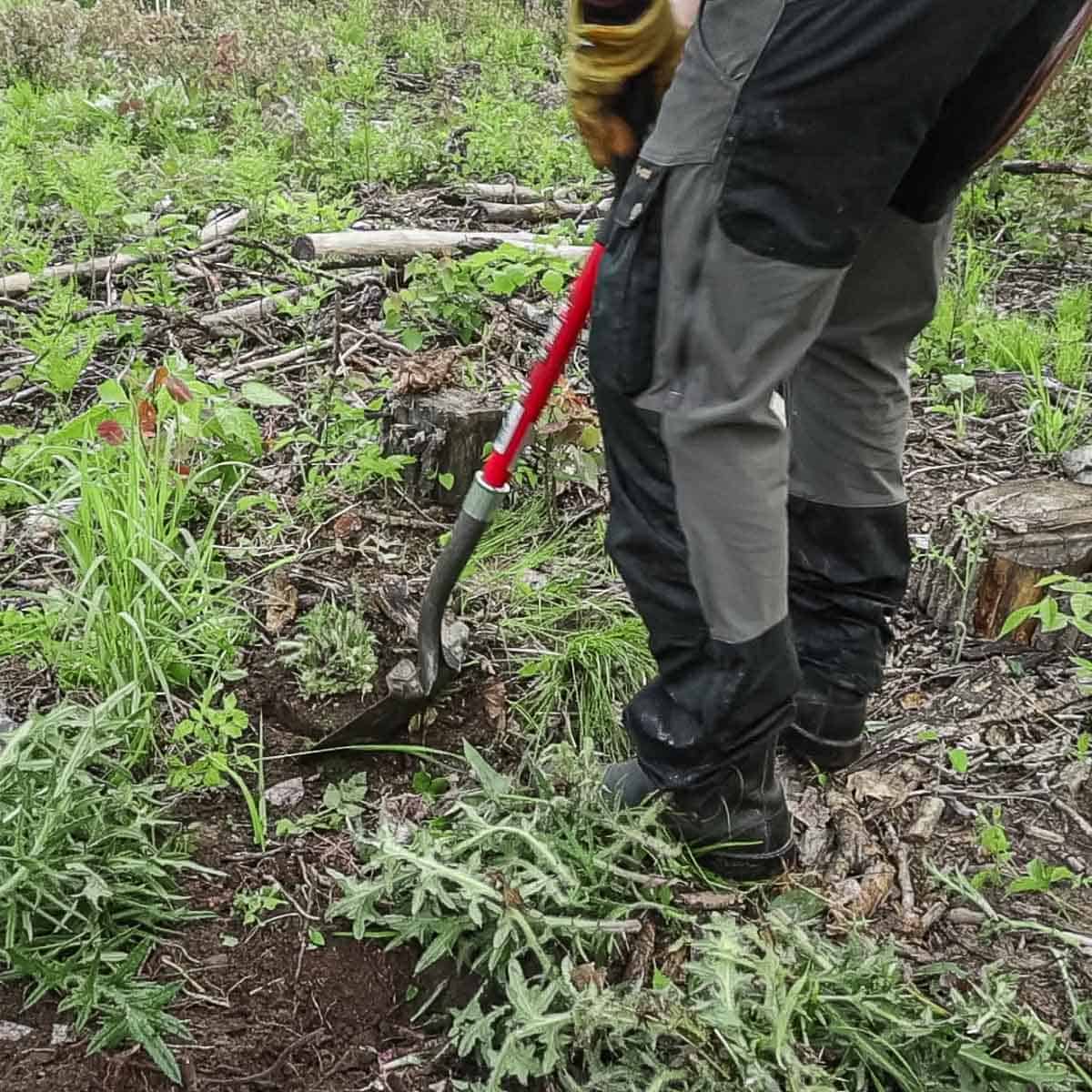
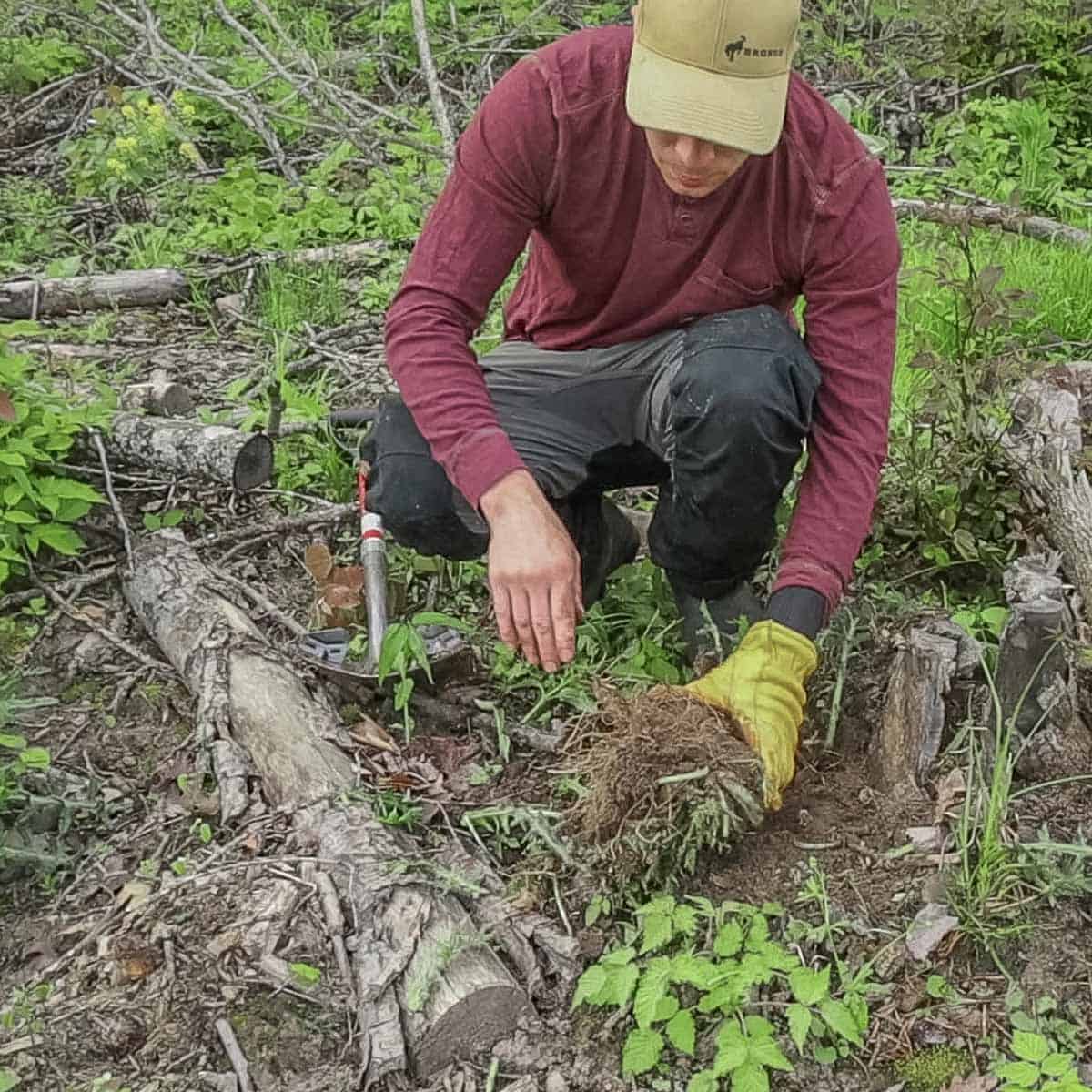
Next I remove dirt from the roots and bring them home, washing them with the hose before bringing them into the kitchen. In the kitchen I wash and clean the roots with warm water.
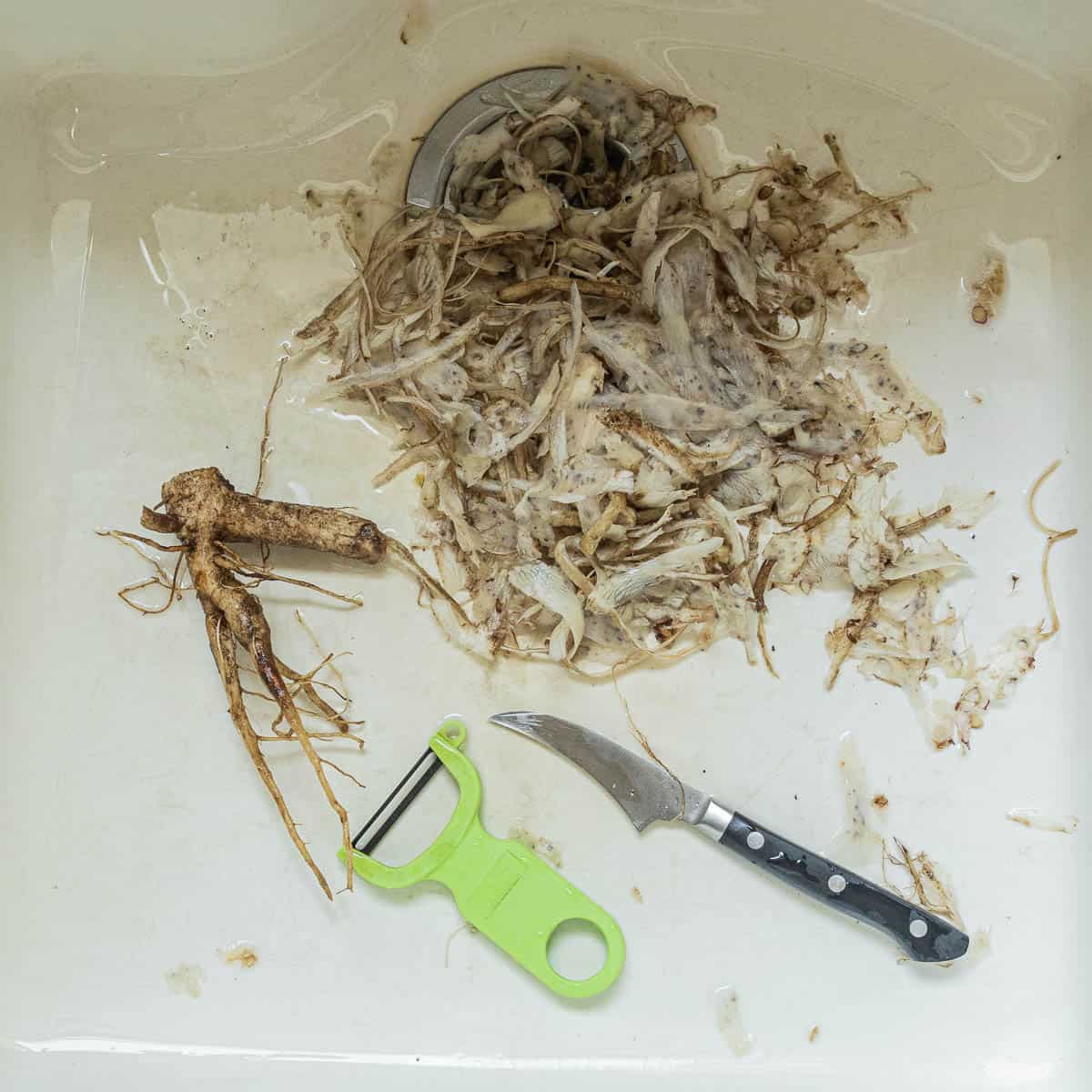
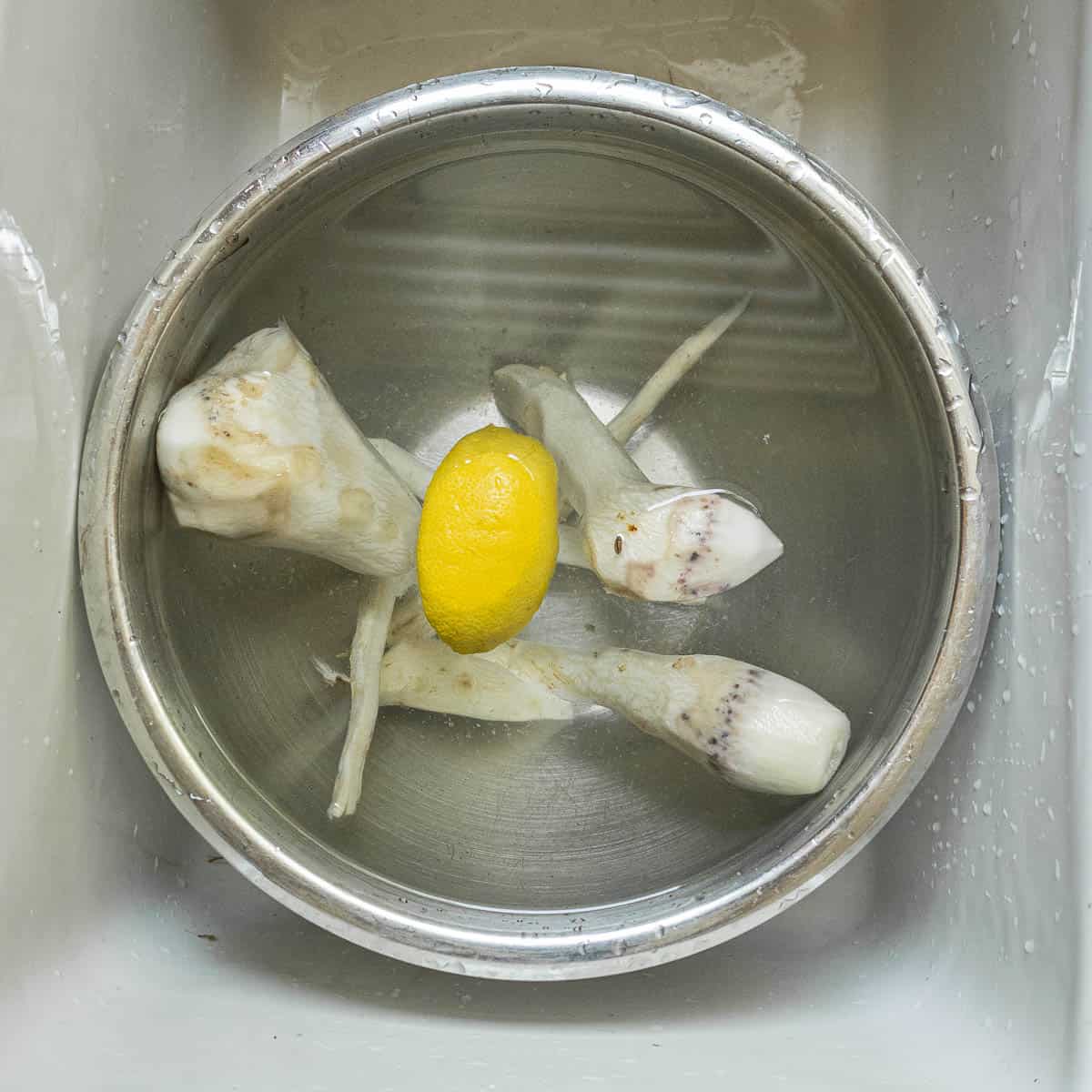
When the roots are cleaned, they're peeled and placed into a bowl of lemon water to prevent them from discoloring.
From here, cut them into pieces and cook thistle roots like a vegetable after simmering in salted water with a dash of lemon juice. 20-30 minutes is a good cooking time for larger pieces. They should remain slightly chewy.
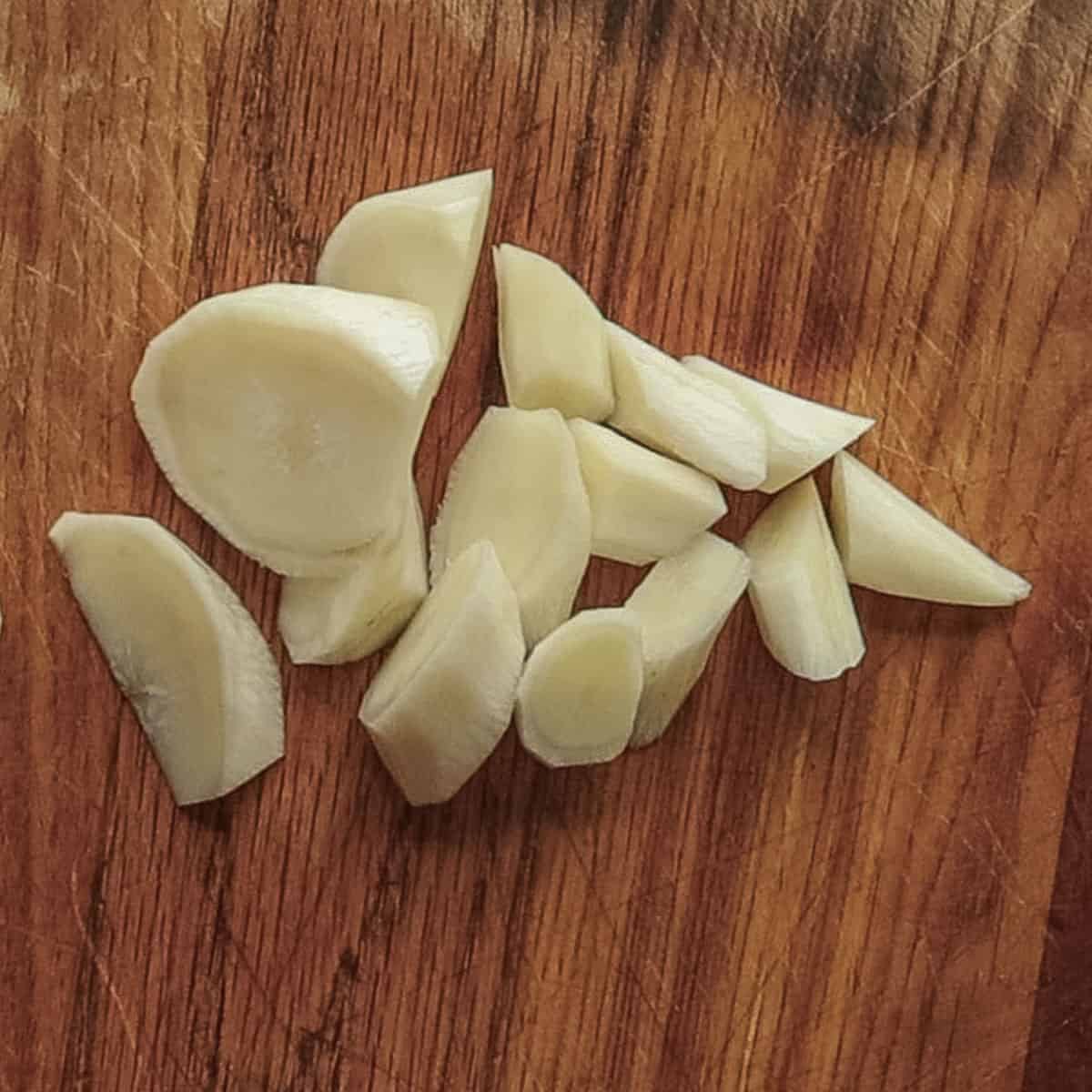
In this post I'm cooking with bull thistle. The roots are more similar to burdock, meaning they're not as tender as others. But even tougher roots can be decent are glazed with butter and a handful of chives or pan roasted.
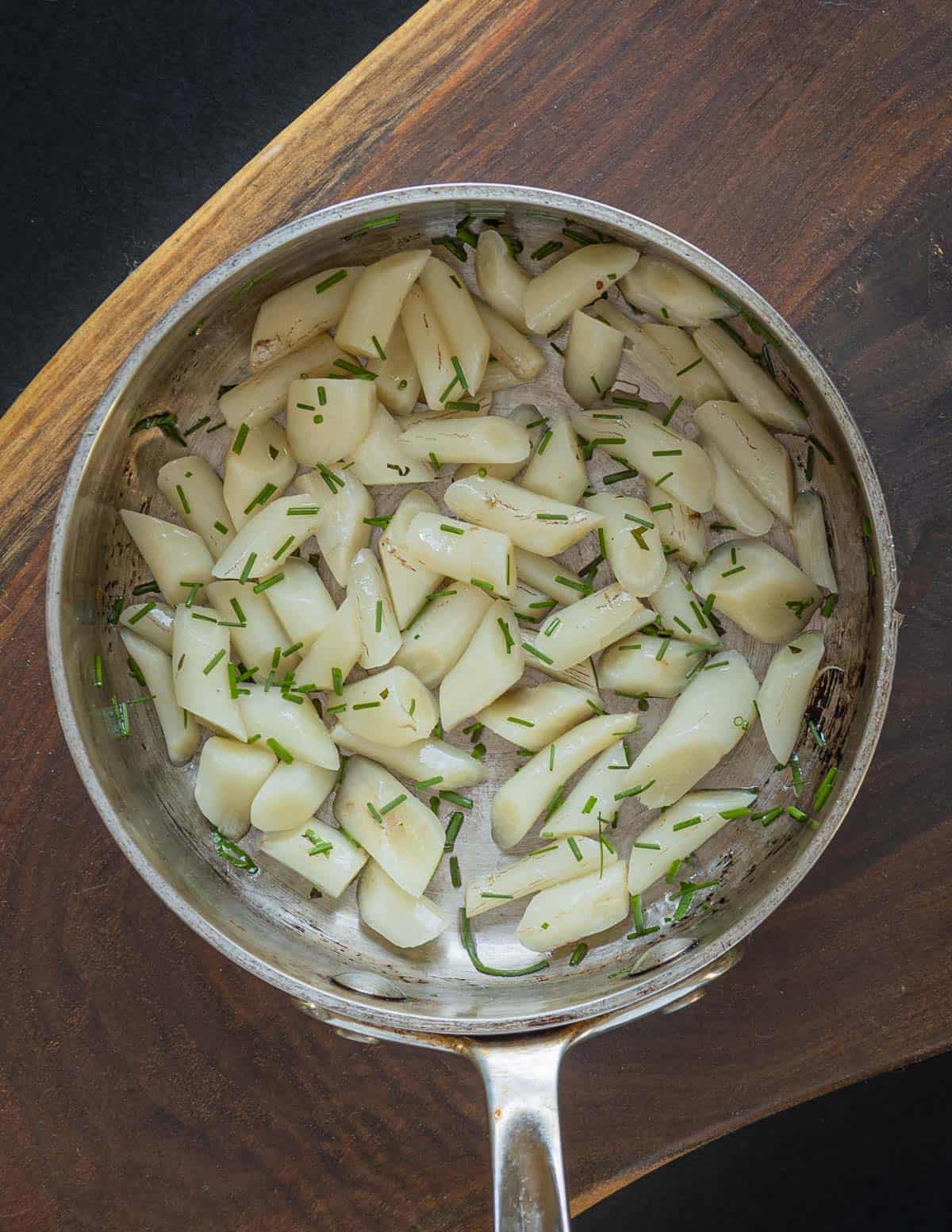
Above: tender thistle roots glazed with butter and chives.
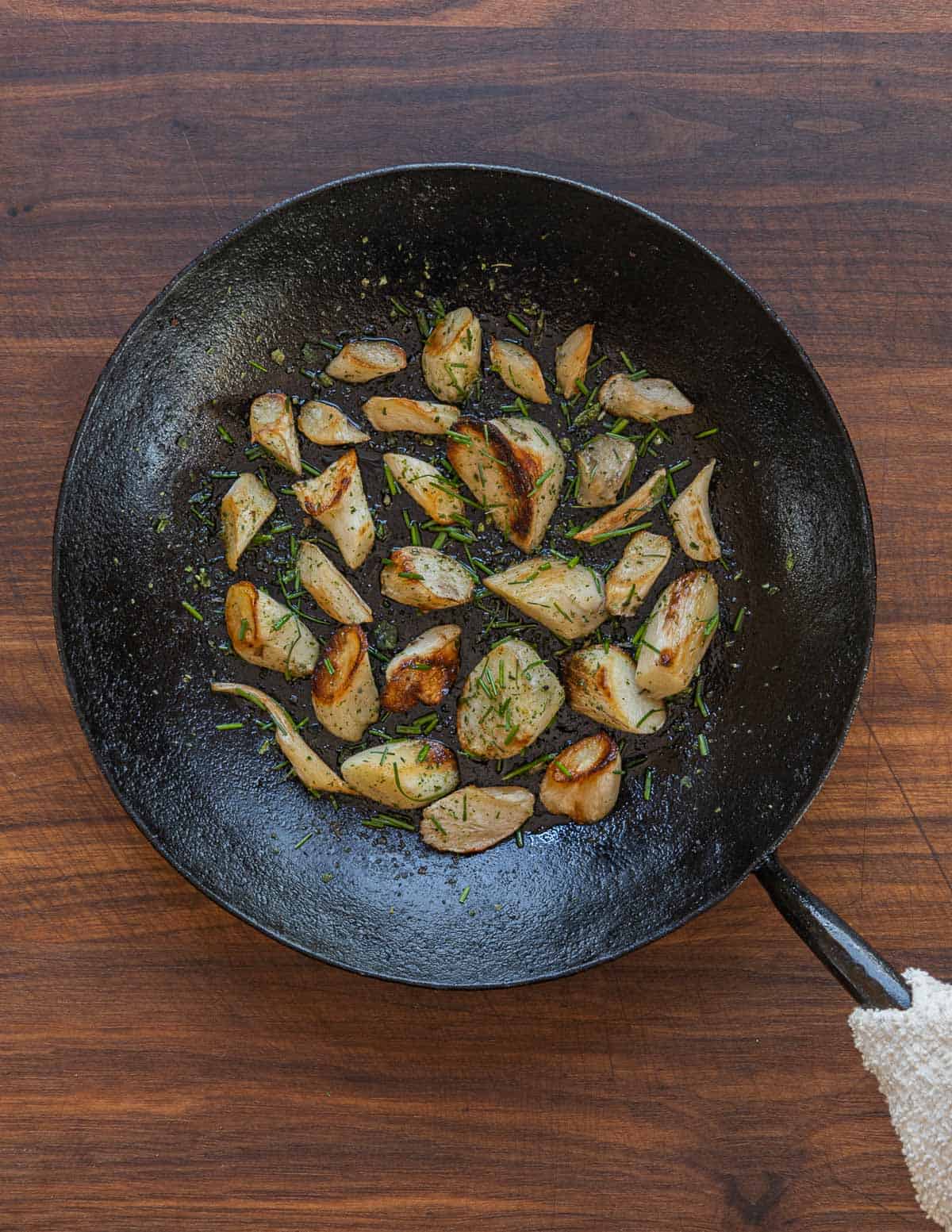
Above: pan-roasted thistle roots with ramp salt.
To make tougher roots palatable, take a page from the traditional Japanese kinpira technique by cutting the roots into matchsticks. This makes them less chewy.
Below: Cut the roots into thin slices, then into julienne matchsticks. Cooking with carrots evens out the texture, giving you a pleasantly chewy vegetable side dish.
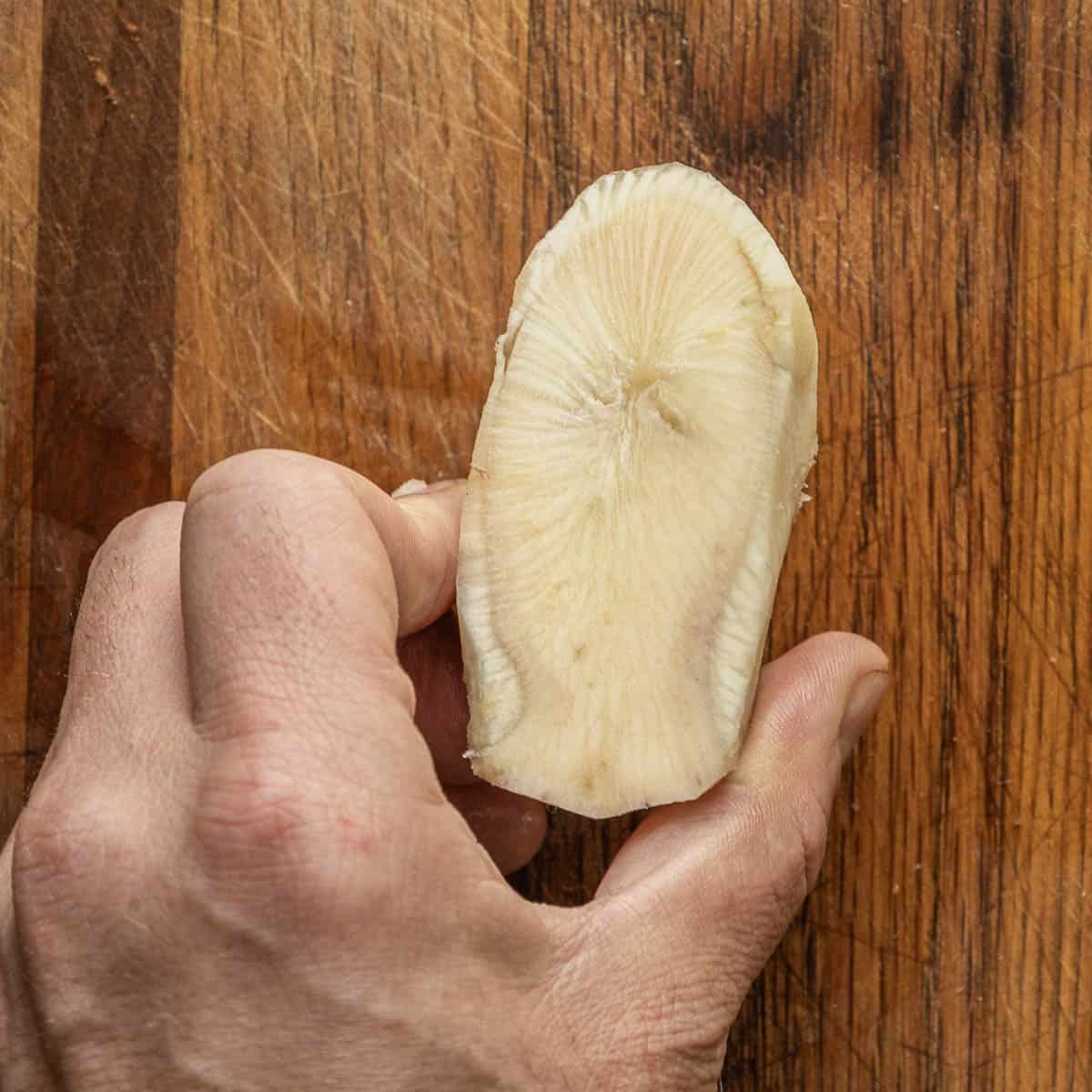
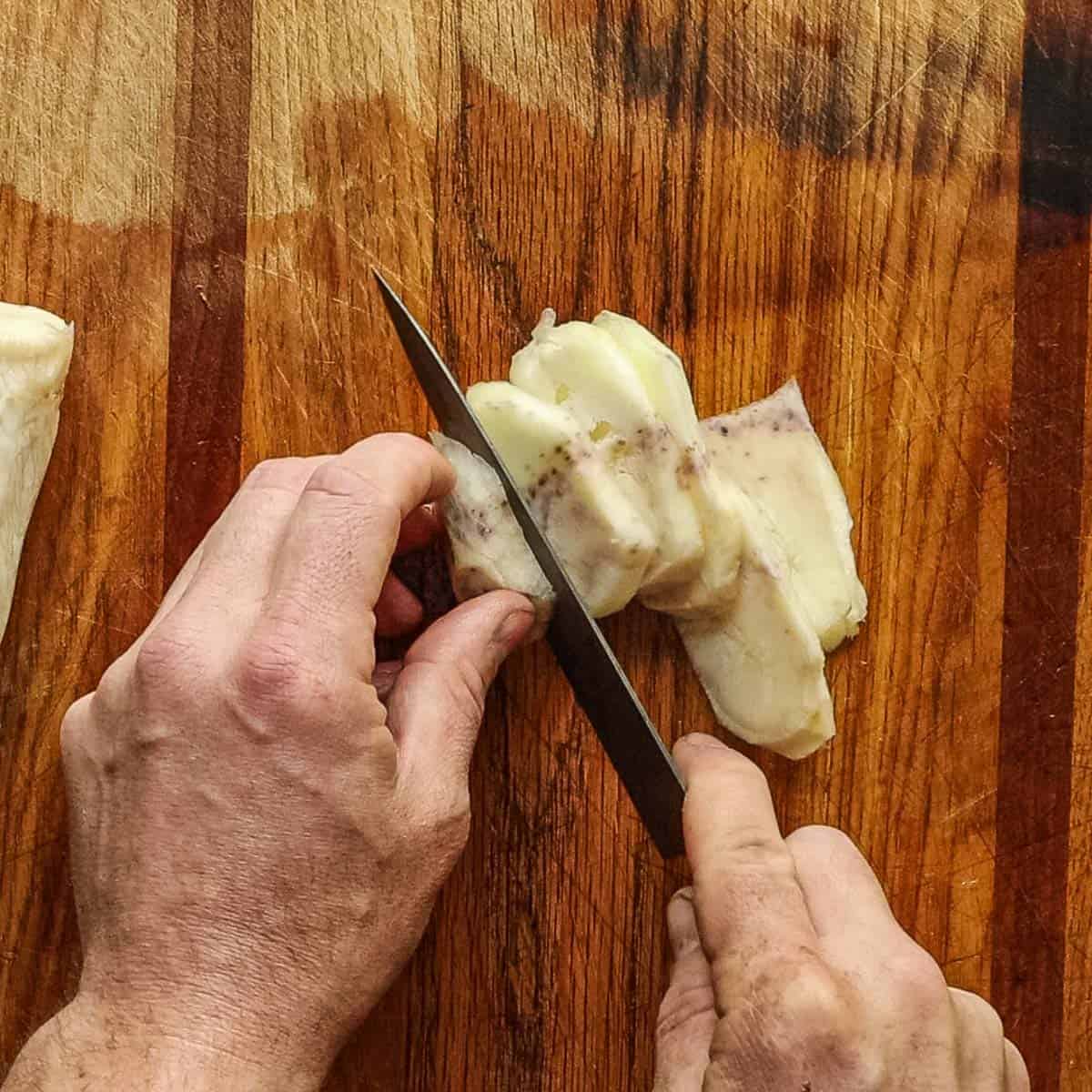
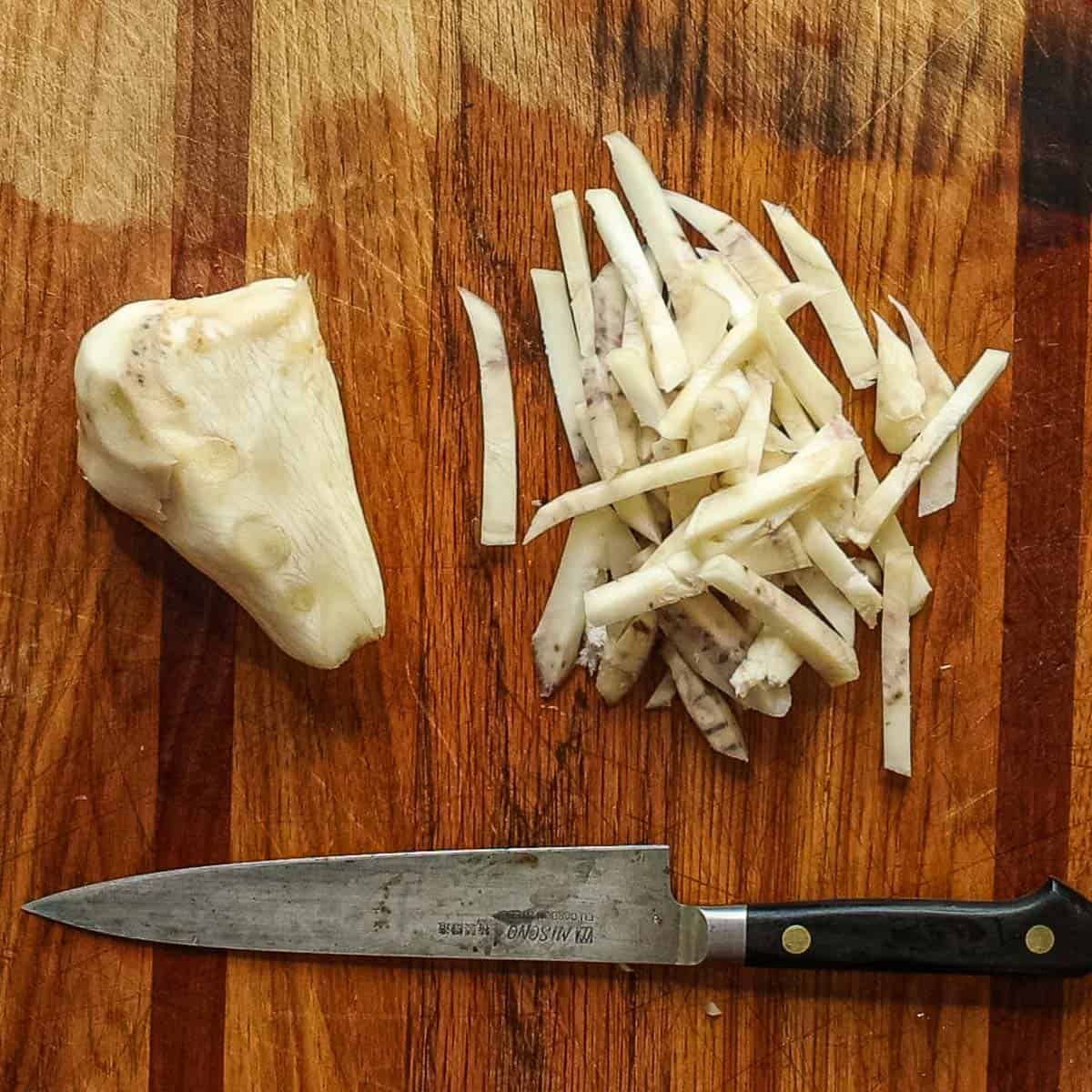
Boil the matchsticks for ten minutes, in lightly salted water with a splash of lemon, then use them to make thistle kinpira and everyone will like them.
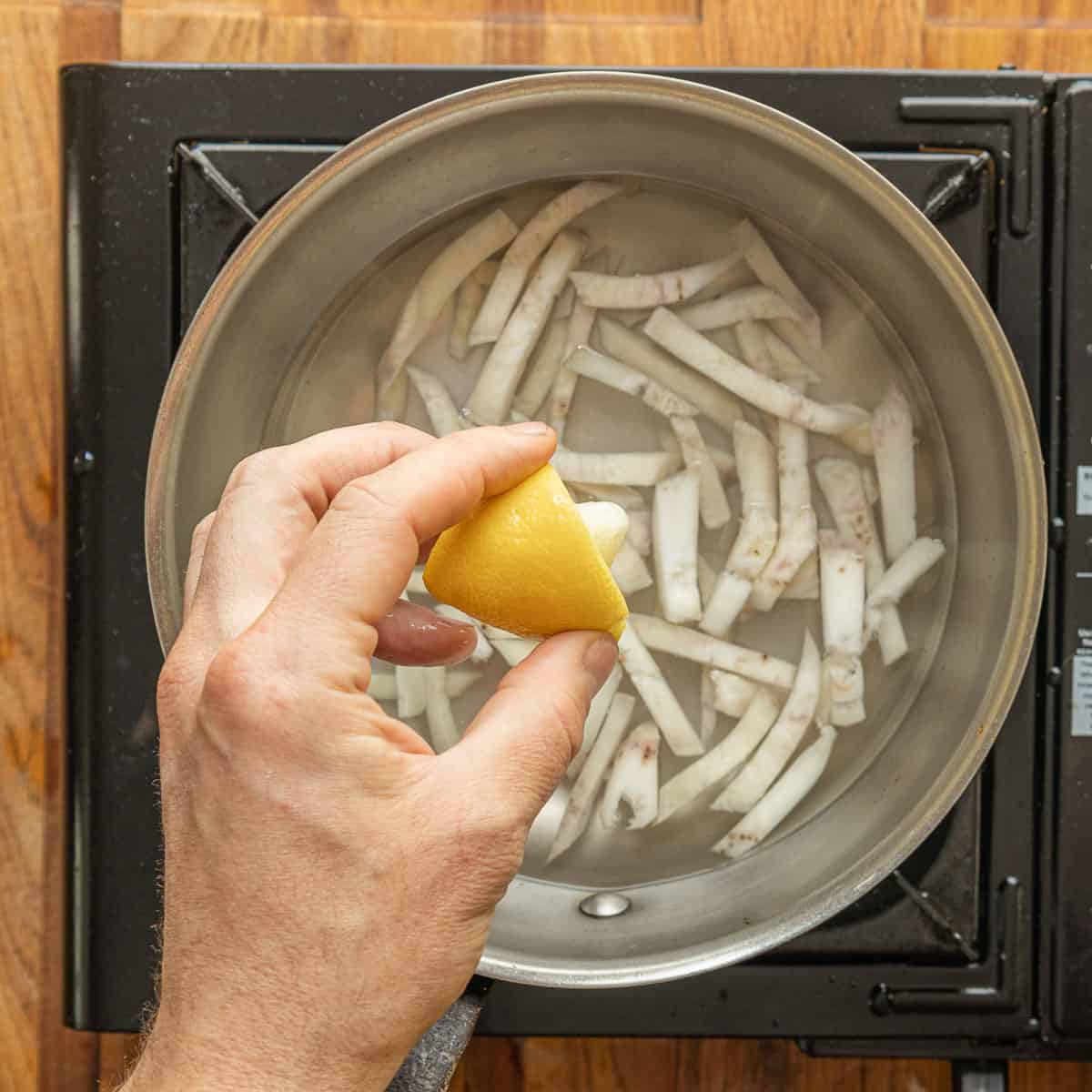
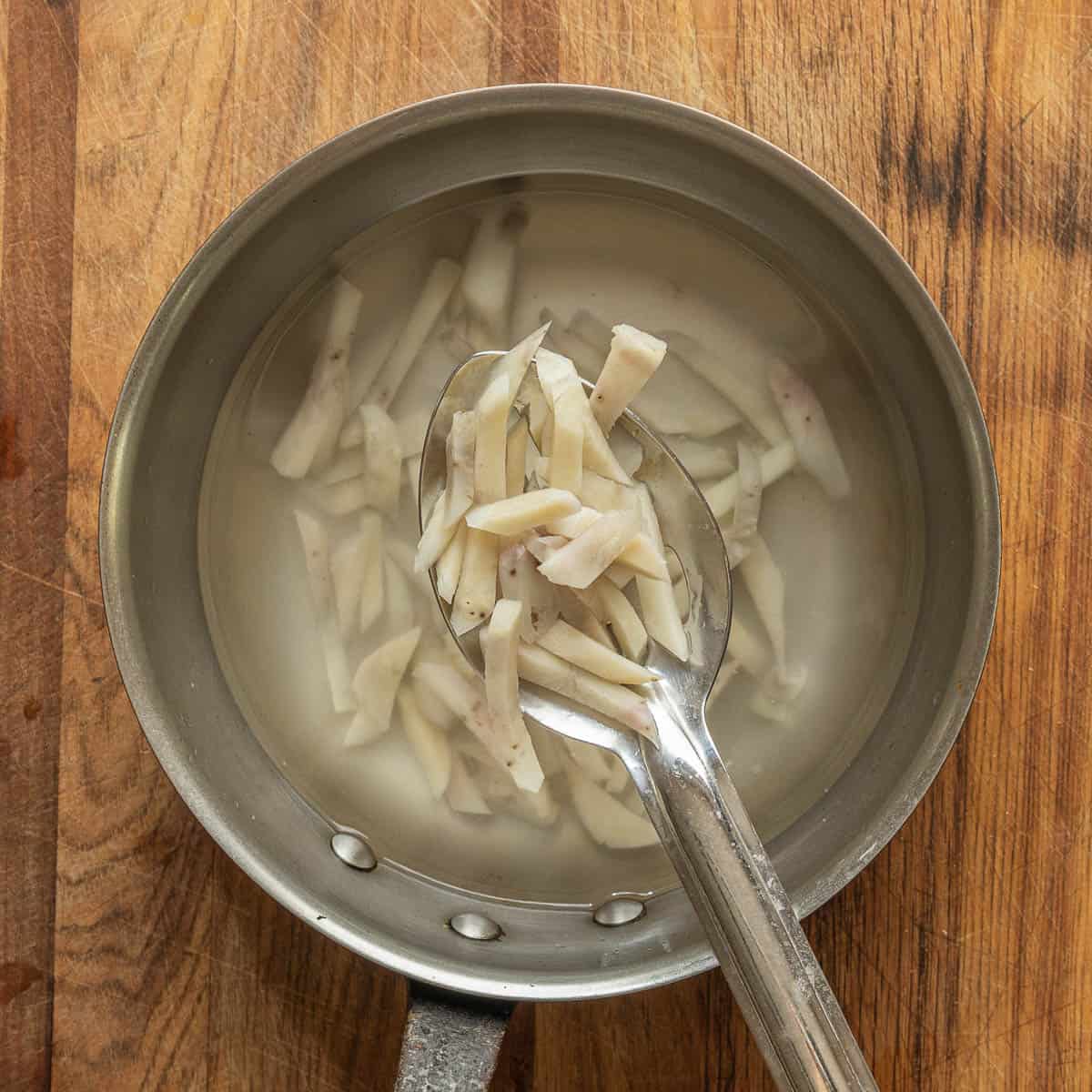
Below: Thistle Root Kinpira is the first thing you should make.
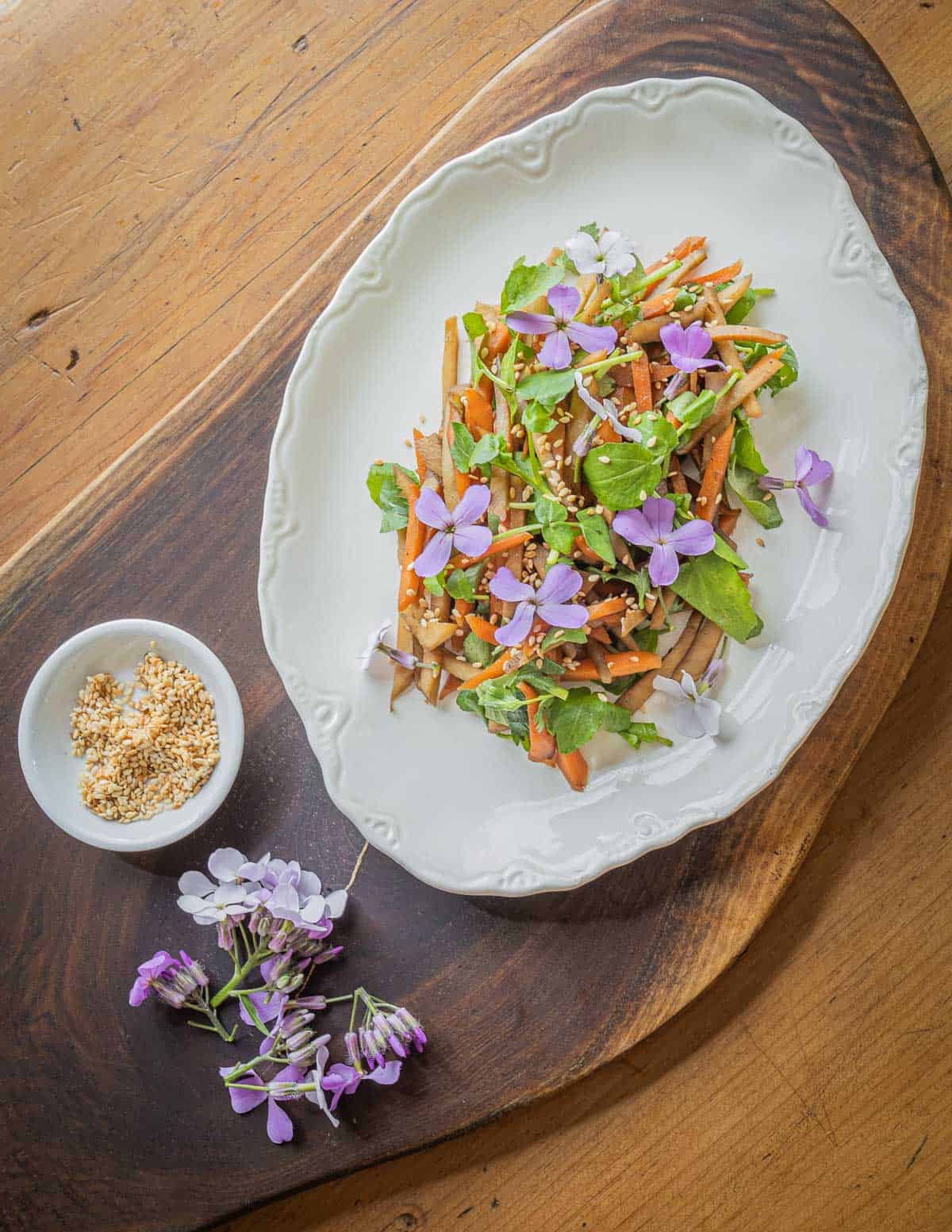
Medicinal Uses of Bull Thistle
The cooking liquid or thistle tea can have a strong diuretic effect. When I was in British Colombia for the Chef's vs Wild Show on Hulu, I tested cooking thistle roots in water over a campfire. As our water needed to be harvested and boiled, I drank the cooking liquid to not waste it.
Every 15 minutes for the next 4-5 hours I was going to the bathroom, and it remains the strongest diuretic experience I've had. It was very uncomfortable.
There's a good article by the American Herbalists guild linked below outlining the plants use in treating such as rheumatoid arthritis, inflammation related to IBS and psoriatic arthritis.
Related Posts
References
Sam Thayer's Field Guide to Edible Wild Plants of Eastern North America
Journal of the American Herbalists Guild: An Herbal Breakthrough in Rheumatology Bull Thistle (Cirsium vulgare) for Spondyloarthropathy

Valentine
Hi Alan,
Very interesting website, thanks for all your work.
Do you think it’s possible to Blanche the roots and freeze them?
Greetings from The Netherlands
Alan Bergo
Hello, yes I think that would possible.
Jos
Wow! That looked tasty! I wonder if the roots could be used as a coffee substitute.
Alan Bergo
As we know dandelion coffee is a thing this is a great idea.
Dayna Litowski
I made your thistle root kinpira today, and I am super happy I finally tried this recipe!! There is so much of it here (Vancouver Island) that it is practically begging to be foraged and devoured. I look forward to gathering more and trying other recipes.
Thanks. 😀
Alan Bergo
Thanks Dayna, glad it worked for you.
Amber
Hi thanks for posting! Have you tried tincturing the purple flower parts? They impart a lovely aroma that would be in good company splashed over some gin. I came here looking for more info on preparing the common sow thistle. I'd be delighted if you have anything at all the share regarding recipes or inspo about the sow thistle. Its regrettably challenging to find like-minded enthusiasts and I so appreciate you. Best wishes
Alan Bergo
Hi Amber, I haven't made tinctures from the flowers, I tend to leave that to medicinal-oriented people as I'm not an expert in that area. If you're looking for ways to prepare sow thistle, just use any recipe on this site calling for dandelions.
Barb
You are very brave to tackle all those Thistles!
I wanted to recommend homeopathic Silicea 6x, twice a day.
Silicea is great for our skin, nails and hair.
One of its most amazing uses is for suppuration and eventual expulsion of sharp, pointed foreign objects in the body such as slivers or glass shards.
It should pop the thorns right out.
Alan Bergo
Thanks Barb.
Tatyana Beer
I cannot thank you enough for this! More so for the link to the fascinating article… I’ve been suffering from debilitating joint pain for a couple of years and have given up on our “medical system” in favour of natural remedies. I’m excited to try the bull thistle tincture described in the article. (I haven’t seen it growing in our area, but seeds are available online so I’ll get some started this summer!)
Thea
Puts a whole new spin on my view of gnarly thistles… though I don’t expect I’ll try this.
Alan Bergo
They won't be for everyone. Varieties with the slender roots are really good though!